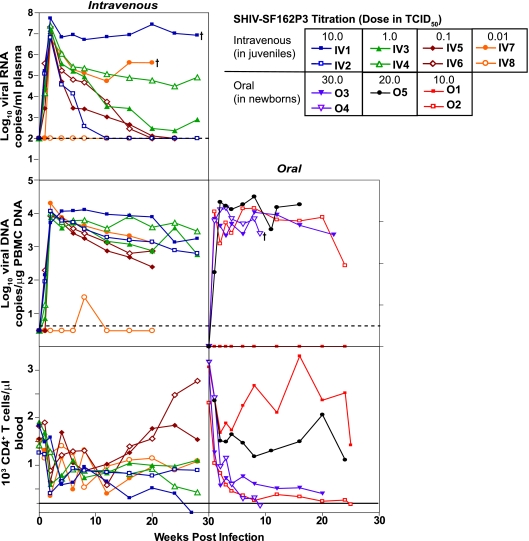FIG. 1.
Longitudinal follow-up of virus loads in plasma and PBMC and CD4+ T-cell counts in SHIV-SF162P3 titration animals. (Left panels) Intravenous titration of SHIV-SF162P3 in juvenile M. nemestrina macaques. Groups of two juvenile macaques were exposed to 10-fold-decreasing concentrations of challenge stock, with the highest dose of 10.0 TCID50 being the undiluted challenge stock. (Right panels) Oral titration of SHIV-SF162P3 in newborn M. nemestrina macaques. Groups of two newborn macaques were exposed to increasing concentrations of challenge stock, with the lowest dose of 10.0 TCID50 being the undiluted challenge stock. Newborns exposed to 20.0 and 30.0 TCID50 were exposed twice and three times, respectively, at 1-hour intervals to 1 ml of undiluted virus stock. Plasma virus loads in juveniles were monitored by real-time quantitative RNA PCR. PBMC DNA virus loads in juveniles and newborns were estimated by real-time DNA PCR. The limits of detection of real-time RNA and DNA PCRs were 100 copies/ml plasma and 3 copies/μg DNA, respectively. The solid lines in the CD4+ T-cell graphs indicate a CD4+ T-cell count of 250, the level below which AIDS is reported to occur. A dagger indicates death of the macaque due to AIDS.

